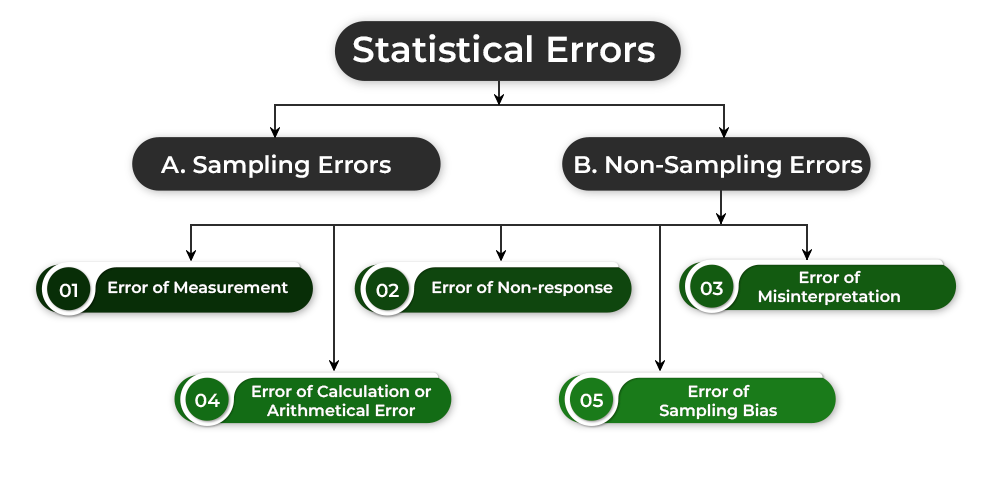What are Statistical Errors?
Last Updated :
06 Apr, 2023
Data is the collection of measurement and facts and a tool that help an individual or a group of individuals reach a sound conclusion by providing them with some information. It helps the analyst understand, analyze, and interpret different socio-economic problems like unemployment, poverty, inflation, etc. Besides understanding the issues, it also helps in determining the reasons behind the problem to find possible solutions for them. Data not only includes theoretical information but some numerical facts too that can support the information. The collection of data is the first step of the statistical investigation and can be gathered through two different sources, namely, primary sources and secondary sources.
What are Statistical Errors?
The errors which are occurred while collecting data are known as Statistical Errors. These are dependent on the sample size selected for the study. There are two types of Statistical Errors; viz., Sampling Errors and Non-Sampling Errors.

1. Sampling Errors:
The errors which are related to the nature or size of the sample selected for the study are known as Sampling Errors. If the size of the sample selected is very small or the nature of the sample is non-representative, then the estimated value may differ from the actual value of a parameter. This kind of error is sampling error. For example, if the estimated value of a parameter is 10, while the actual value is 30, then the sampling error will be 10-30=-20.
Sampling Error = Estimated Value – Actual Value
2. Non-Sampling Errors:
The errors related to the collection of data are known as Non-Sampling Errors. The different types of Non-Sampling Errors are Error of Measurement, Error of Non-response, Error of Misinterpretation, Error of Calculation or Arithmetical Error, and Error of Sampling Bias.
i) Error of Measurement:
The reason behind the occurrence of Error of Measurement may be difference in the scale of measurement and difference in the rounding-off procedure that is adopted by different investigators.
ii) Error of Non-response:
These errors arise when the respondents do not offer the information required for the study.
iii) Error of Misinterpretation:
These errors arise when the respondents fail to interpret the question given in the questionnaire.
iv) Error of Calculation or Arithmetical Error:
These errors occur while adding, subtracting, or multiplying figures of data.
v) Error of Sampling Bias:
These errors occur when because of one reason or another, a part of the target population cannot be included in the sample choice.
Note: If the field of investigation is larger or the size of the population is larger, then the possibility of the occurrence of errors related to the collection of data is high. Besides, a non-sampling error is more serious than a sampling error. It is because one can minimise the sampling error by opting for a larger sample size which is not possible in the case of non-sampling errors.
Like Article
Suggest improvement
Share your thoughts in the comments
Please Login to comment...